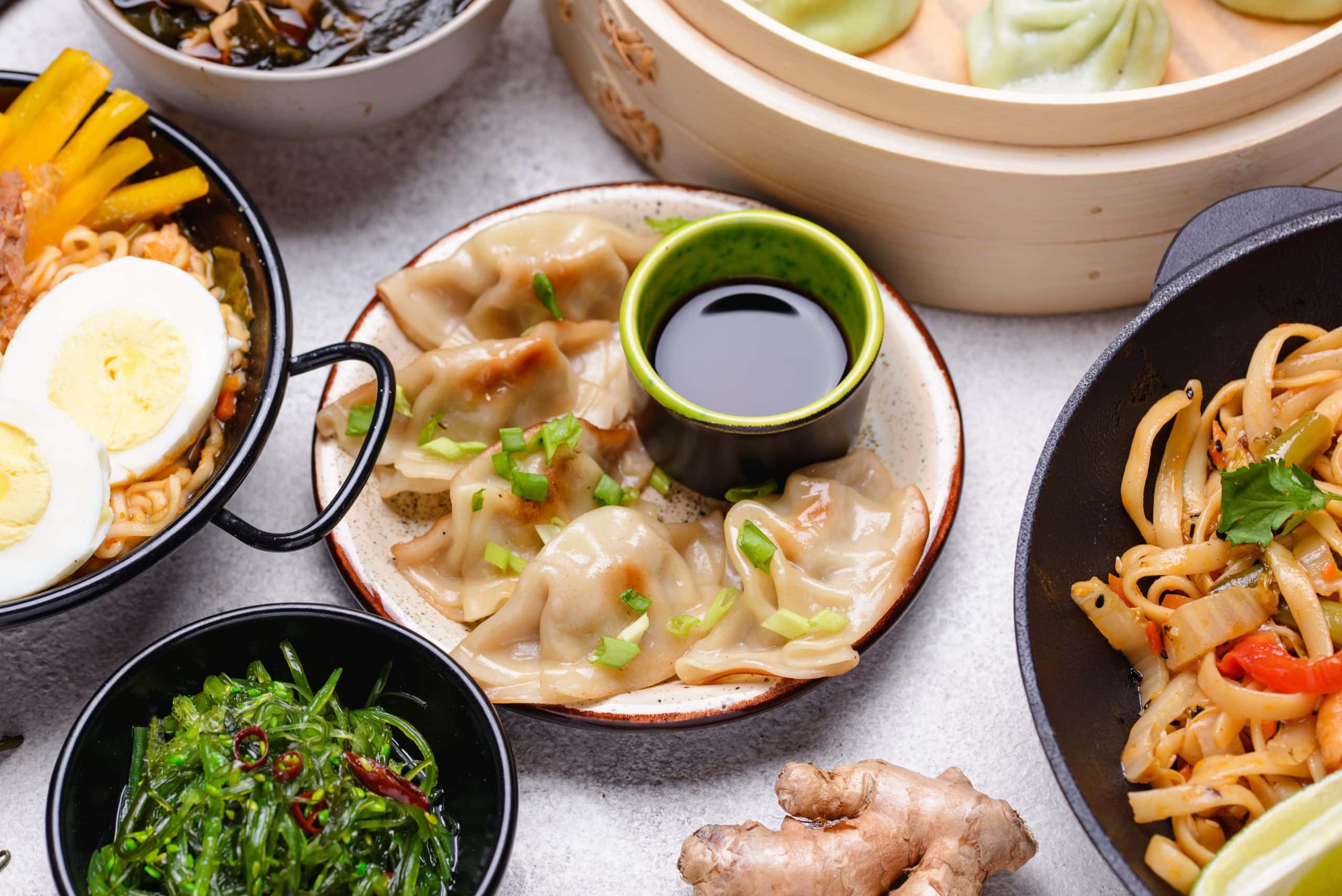Aromatic herbs have been humanity’s secret weapon in the kitchen for centuries. They have the power to transform a simple meal into a symphony of flavors, elevating dishes from the mundane to the extraordinary. There’s an undeniable magic that happens when the right herb meets the right dish at just the right moment. Whether it’s a pinch of fresh basil leaves in a tomato soup, a sprig of rosemary in a roast chicken, or a handful of coriander in a spicy curry, the transformative power of herbs is truly remarkable. Learning how to cook with herbs, using them to their full potential, can take your culinary skills to the next level.
Cooking with fresh herbs
Cela peut vous intéresser : The benefits of plant-based cooking
Fresh herbs are a delight to cook with. They lend a depth and freshness to dishes that dried herbs often can’t match. The key to using fresh herbs is knowing when to add them to your cooking process.
In the world of herbs, freshness equals flavor. Fresh herbs should be added towards the end of the cooking process to preserve their flavor and color. Think of a fragrant bowl of pho, topped with a handful of fresh basil and cilantro right before serving. Or a creamy potato soup, finished off with a sprinkle of fresh chives.
En parallèle : How to master homemade sauces
When using fresh herbs, you should be generous. Unlike dried herbs, which have a concentrated flavor, fresh herbs are more subtle. This means you can use more of them without overpowering your dish. And remember: the fresher the herb, the better the flavor.
Cooking with dried herbs
While fresh herbs offer a burst of flavor, dried herbs bring a different, but equally important, set of advantages to the table. They have a concentrated, robust flavor and a long shelf life, making them ideal for slow-cooked dishes and recipes that require a longer cooking time.
Dried herbs should be added early in the cooking process to allow their flavors to fully develop and infuse the dish. For example, add dried oregano and garlic to your tomato sauce at the beginning of cooking for a deep, rich flavor.
It’s important to remember that dried herbs are more potent than fresh ones. As a general rule, use one-third the amount of dried herbs as you would fresh. So, if a recipe calls for 1 tablespoon of fresh rosemary, you’ll only need 1 teaspoon of dried.
Using herbs to flavor oils
Infusing oils with herbs is a simple way to add flavor to your dishes. Herb-infused oils can be used for dressings, marinades, or simply to add a flavorful touch to your cooking.
To make an herb-infused oil, simply heat a good-quality oil—like olive or grapeseed—over medium heat, and add your chosen herbs. Allow the herbs to steep in the oil until it is fragrant. Once the oil has cooled, strain out the herbs, and store the oil in a clean glass bottle.
Try infusing oil with herbs like rosemary, thyme, or garlic for a versatile cooking ingredient that will add depth and sophistication to your dishes.
How to choose the right herbs for your dish
Choosing the right herbs can seem daunting, but it’s easier than you might think. The key is to consider the flavors in your dish and select herbs that will complement them.
For hearty, savory dishes like stews or roasts, robust herbs like rosemary, sage, and thyme work well. For lighter, summery dishes like pasta salads or seafood, go for herbs with a fresh, zingy flavor like basil, dill, or mint.
Don’t be afraid to experiment with different combinations of herbs, too. You might discover a new favorite pairing. And remember, the best way to learn is by doing, so don’t be afraid to get in the kitchen and start cooking!
Methods for adding herbs to your meals
There are many ways to incorporate herbs into your meals. You could add them into your sauces, marinades, or dressings, stir them into soups or stews, mix them into salads, or use them as a garnish.
When adding herbs to a dish, try to do so in a way that allows their flavor to be evenly distributed. For example, if you’re adding herbs to a soup or stew, stir them in well to ensure they’re evenly spread throughout the dish.
Finally, remember that less is often more when it comes to herbs. While they can add a lot of flavor, they can also overpower a dish if used in excess. Start with a little, taste, and add more if needed.
Preserving and Storing Aromatic Herbs
Preserving your aromatic herbs properly is crucial to maintaining their flavor and potency. Fresh herbs, in particular, can spoil quickly if not stored correctly. On the other hand, dried herbs, if not preserved well, can lose their fragrance and taste over time.
Fresh herbs should ideally be used immediately after purchase or harvest. However, if you need to store them, wash them under cold water, gently pat dry with a towel, and store in a plastic bag with a damp paper towel in the refrigerator. This will extend their freshness for a week or so.
Dried herbs, conversely, should be stored in airtight containers in a cool, dark place. A pantry or kitchen cabinet away from heat and light is often ideal. Remember to label the container with the herb’s name and the date it was stored. Over time, dried herbs can lose their potency. As a rule of thumb, try to use dried herbs within a year.
Remember, herbs are delicate. Handle them with care to preserve their aroma and flavor. Whether you’re storing bay leaves after a slow cooker meal preparation or keeping fresh basil for a soup recipe, the same rules apply.
Growing Your Own Aromatic Herbs
Growing your own aromatic plants can be an exciting and rewarding endeavor. You’ll have a constant supply of fresh herbs at your fingertips, and nothing beats the satisfaction of adding homegrown herbs to your meals.
Start with the herbs you use most often in your cooking. Basil, rosemary, thyme, parsley, and chives are all relatively easy to grow in pots on a sunny windowsill or in a small garden patch. Growing your own herbs also means you have control over how they’re grown, and you can ensure they’re organic and pesticide-free.
Water your herbs regularly and ensure they get plenty of sunlight. Each herb has different sunlight and water requirements, so research these beforehand. For instance, while basil loves lots of sunlight and regular watering, rosemary prefers a drier soil and can handle a little more shade.
Remember, growing your own herbs is not just functional—it can also be a relaxing and rewarding hobby. So, take the plunge and start cultivating your little garden of aromas.
Conclusion: The Magic of Cooking with Aromatic Herbs
Cooking with aromatic herbs is an art. It’s about finding the perfect balance of flavors, knowing when to add fresh herbs and when to opt for dried, and understanding how to store and preserve your herbs to maintain their potency. It’s about appreciating the unique characteristics each herb brings to a dish and knowing how they can transform a meal from ordinary to extraordinary.
Whether you’re a seasoned chef or a novice meal planner, the world of herbs offers vast opportunities for creativity and innovation in the kitchen. From infusing olive oil with aromatic rosemary to garnishing a soup recipe with fresh basil, the possibilities are endless.
As you continue on your culinary journey with herbs, remember the ultimate goal isn’t perfection—it’s about enjoying the process and discovering new flavors and combinations that excite your palate. After all, cooking isn’t just about feeding our bodies; it’s about nourishing our souls too.
So, whether you’re dicing onions and garlic for a hearty stew or carefully measuring out spices for a complex curry, remember to enjoy every moment in the kitchen. Let the enchanting aromas of herbs and spices transport you to new culinary territories. Happy cooking!






